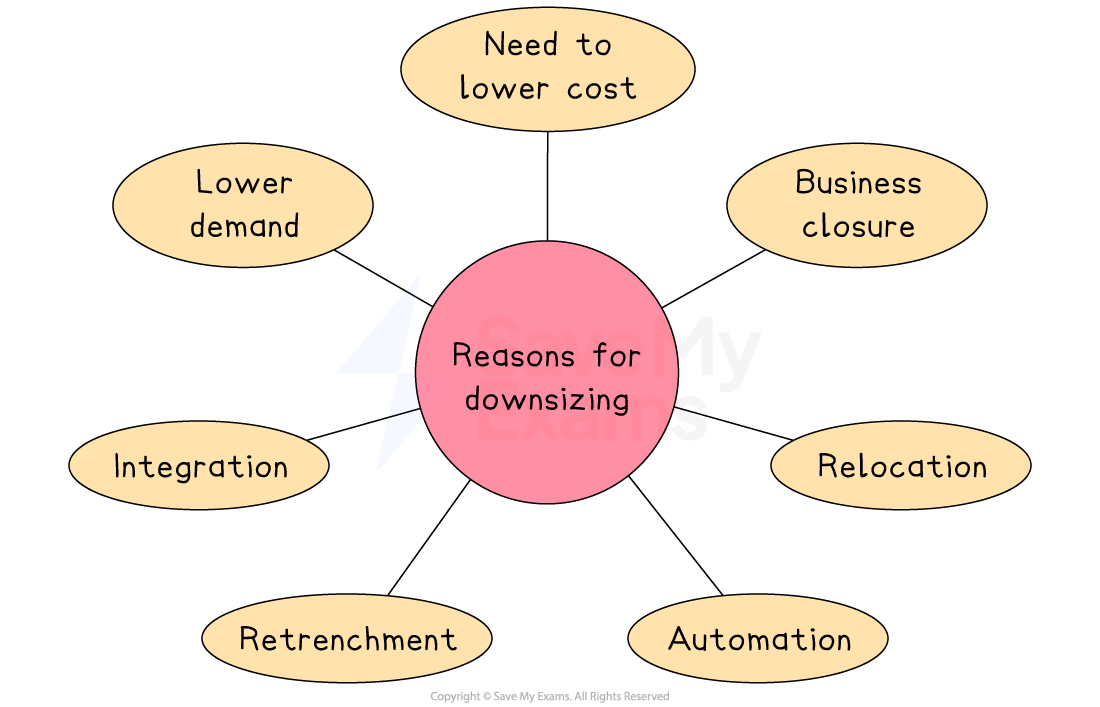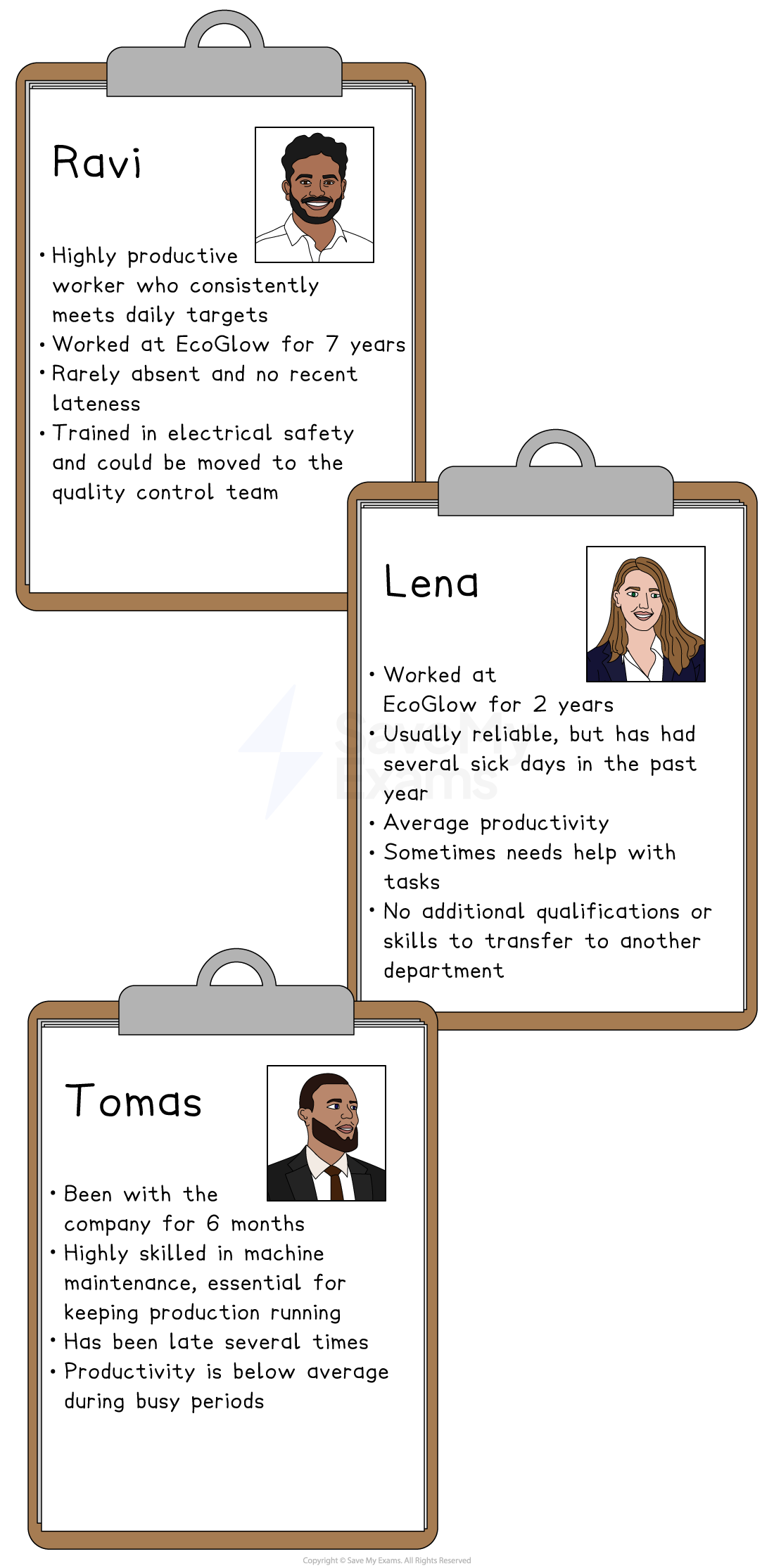Syllabus Edition
First teaching 2025
First exams 2027
Reducing the Size of the Workforce (Cambridge (CIE) IGCSE Business): Revision Note
Exam code: 0450, 0986 & 0264, 0774
Reasons for downsizing
Workforce planning is the process of determining the human resource needs for the foreseeable future, in terms of the number and skills of employees required
When expanding, a business often requires more employees
However, on some occasions they need to downsize the workforce (reduce the number of employees)
Reasons for downsizing

Lower demand
Is likely to reduce the volume of output a business needs to produce
Fewer workers are required to produce a reduced level of output
Integration with other businesses
Mergers or takeovers could mean that some workers' roles are duplicated so some staff will no longer be required
The need to lower costs
Businesses that are struggling to survive look to reduce their most significant costs which, in many cases, is salaries and wages
Business closure
Will mean that only a few workers will be required to legally dissolve the organisation
Automation
involves more machinery being used in the business
Workers' jobs are replaced, with remaining workers focused on operating machinery
Retrenchment
Is likely to mean that fewer resources of all types are required, including employees
Business relocation
may allow a business to reorganise its operations, requiring fewer employees
Redundancy
Redundancy is where a job role is no longer needed by a business and a worker is dismissed, usually with compensation
The legal process for selecting workers for redundancy must be very clear and fair
The factors used to determine who is made redundant
Worker productivity | Lateness or absence data | Length of time employed | Workers with essential skills |
|---|---|---|---|
|
|
|
|
Some workers are happy to be made redundant
This may be because they have another job they can go to, they want to retire early or they want to start their own business
Some businesses offer a good redundancy 'pay out' which is attractive to workers
Examiner Tips and Tricks
Don’t confuse redundancy with dismissal – redundancy happens when a job no longer exists, not because of poor performance. Mixing these up is a common error
Recommending redundancies
HR managers often have to make difficult decisions about who should be made redundant
Case Study
Redundancy at EcoGlow Ltd
EcoGlow Ltd is a small Finnish business that makes and sells eco-friendly lighting products. Due to rising costs and falling sales, the manager has decided that one worker must be made redundant to save money
The manager is considering three employees from the assembly department
Each worker will be assessed based on their productivity, attendance, time at the business and whether they have skills useful for other roles in the company

Who is most suitable for redundancy?
Based on these factors, Lena is the most suitable for redundancy
She has fewer years at the company than Ravi and lacks the specialist skills that Tomas has
Her attendance has also been less reliable, and her productivity is not strong enough to justify keeping her over the others

Unlock more, it's free!
Did this page help you?